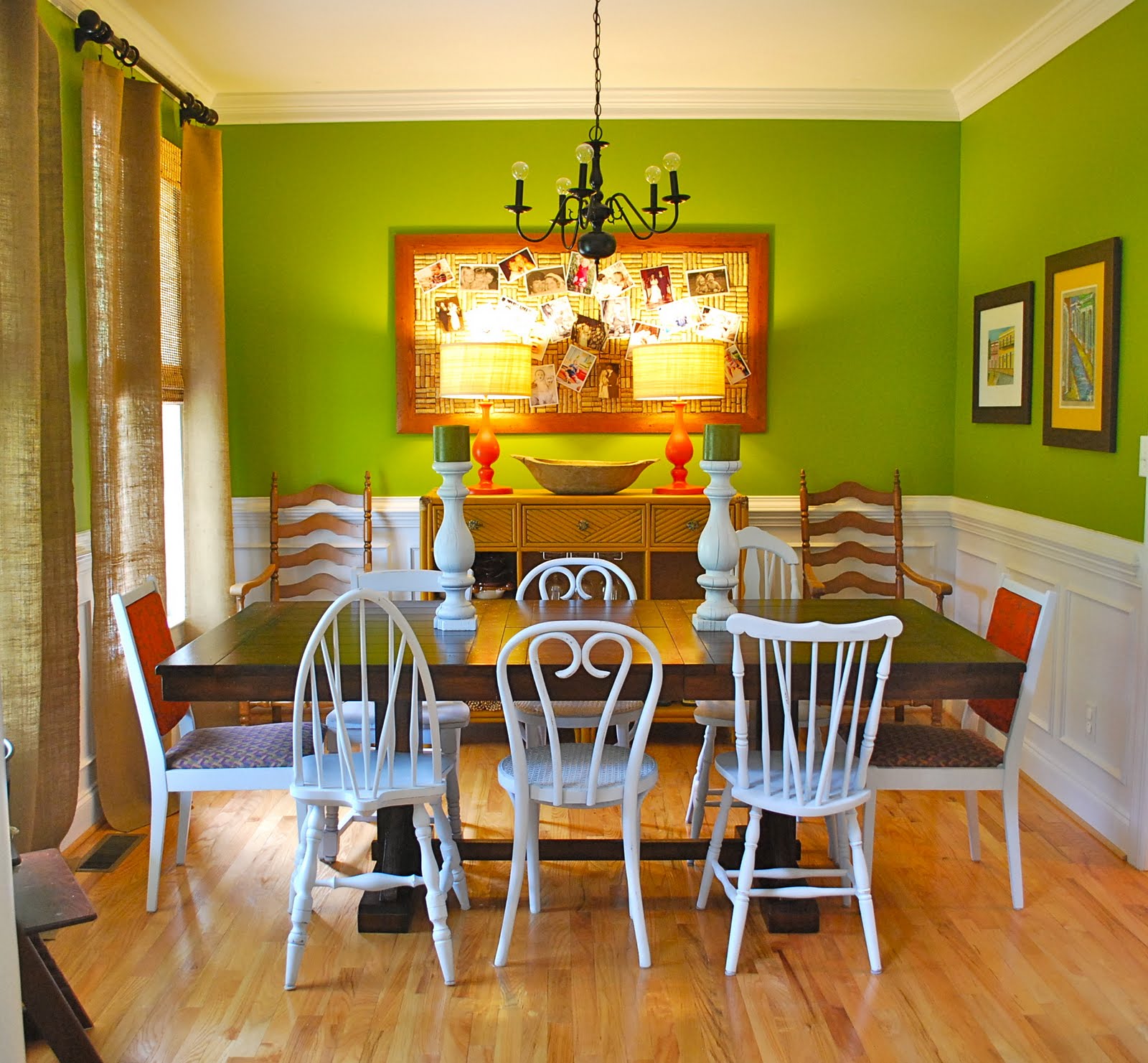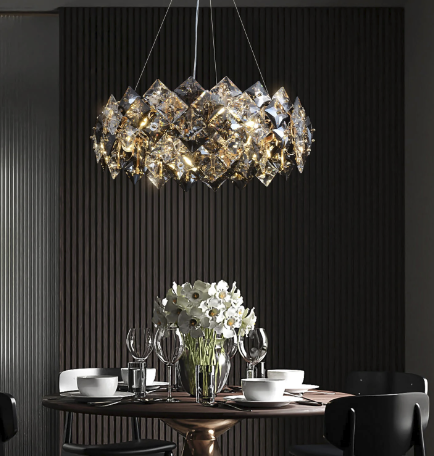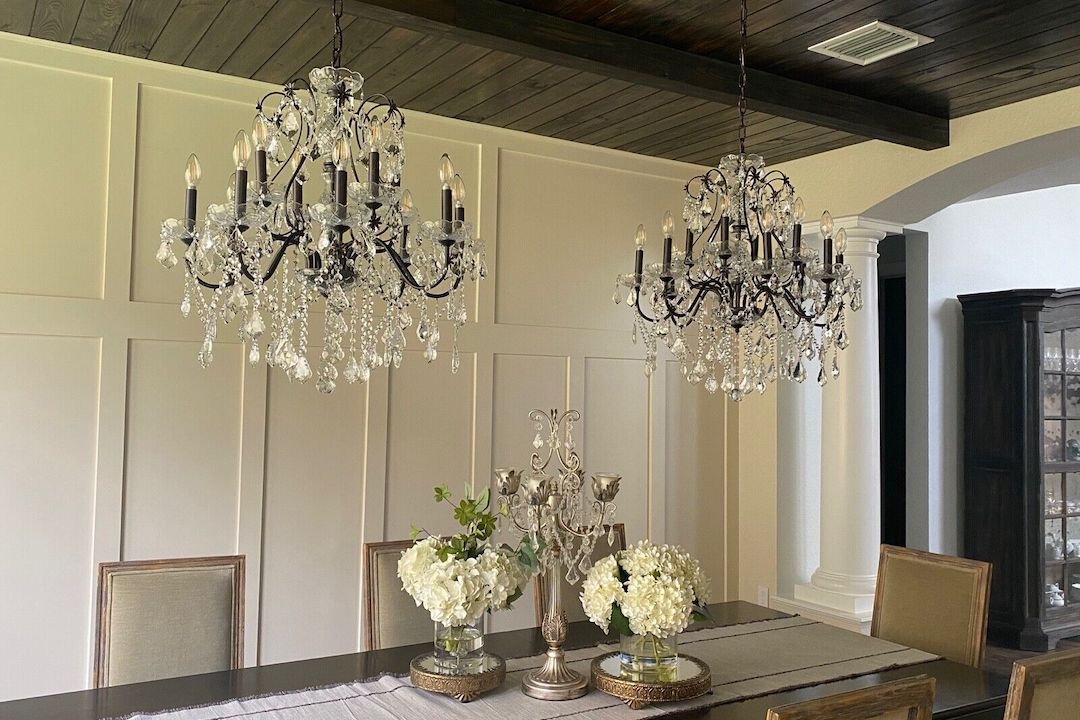The history of American iron chandeliers is a fascinating journey that intertwines craftsmanship, artistry, and the evolution of lighting design in the United States. The use of iron in chandelier construction can be traced back to the colonial period, where early American settlers sought to replicate the ornate lighting fixtures they had known in Europe. These early chandeliers were often simple in design, reflecting the utilitarian needs of the time.
However, as the country grew and prospered, so too did the complexity and artistry of these fixtures. By the 18th century, iron chandeliers began to emerge as symbols of wealth and sophistication, often adorned with intricate scrollwork and elaborate candle holders. As the Industrial Revolution took hold in the 19th century, advancements in manufacturing techniques allowed for greater experimentation with materials and designs.
Iron chandeliers became more accessible to the burgeoning middle class, leading to a proliferation of styles that ranged from rustic to opulent. The introduction of gas lighting in the mid-1800s further transformed chandelier design, as manufacturers began to incorporate gas fixtures into their creations. This period marked a significant shift in how chandeliers were perceived; they evolved from mere functional objects into statement pieces that defined the aesthetic of a room.
By the late 19th century, American iron chandeliers Mosundesign had firmly established themselves as a staple in both residential and commercial spaces, showcasing the craftsmanship and innovation of American artisans.
The Timeless Elegance of Retro Design
The Versatility of Retro Design
In the realm of lighting, retro designs, particularly those featuring iron chandeliers, offer an elegant solution for those seeking to infuse their spaces with character and charm. The clean lines and geometric shapes prevalent in mid-century modern design, for instance, harmonize beautifully with the rugged texture of iron, creating a striking visual contrast that appeals to many.
Aesthetic Influences from Various Decades
Moreover, retro design is not confined to a single aesthetic; it encompasses a wide range of influences from various decades. From the bold colors and playful forms of the 1960s to the minimalist elegance of the 1970s, retro iron chandeliers can serve as focal points that anchor a room’s decor.
Timeless Elegance and Unique Details
These fixtures often feature unique details such as hand-forged elements or vintage patinas that tell a story of their own. The timeless elegance of retro design lies in its versatility; it can seamlessly blend with both traditional and contemporary interiors, making it an enduring choice for homeowners and designers alike.
Modern Applications for Vintage Style
In recent years, there has been a resurgence of interest in vintage style, particularly in the realm of interior design. Homeowners and designers are increasingly drawn to the charm and character that vintage elements bring to modern spaces. Iron chandeliers, with their rich history and distinctive aesthetic, have found new life in contemporary settings.
They are often used as statement pieces in dining rooms, living areas, and even entryways, where their presence can elevate the overall ambiance of a space. One modern application of vintage-style iron chandeliers is their integration into open-concept living spaces. As homes become more interconnected, the need for cohesive design elements has grown.
A vintage iron chandelier can serve as a unifying feature that ties together various areas within an open layout. For example, a large wrought-iron chandelier hanging above a dining table can create a focal point that draws the eye while complementing adjacent living areas. Additionally, these fixtures can be paired with modern furnishings to create an eclectic yet harmonious aesthetic that reflects the homeowner’s personality.
Restoring and Refurbishing Antique Chandeliers
Restoring and refurbishing antique chandeliers is an art form that requires both skill and an appreciation for history. Many antique iron chandeliers have weathered the test of time, often showing signs of wear such as rust, chipped paint, or broken components. The restoration process begins with a thorough assessment of the chandelier’s condition.
This includes examining the structural integrity of the fixture, identifying any missing parts, and determining whether the original finish can be preserved or if it needs to be stripped away. Once the assessment is complete, restoration experts typically clean the chandelier using gentle methods to avoid damaging delicate details. Rust can be treated with specialized solutions that halt its progression while preserving the underlying metal.
If necessary, broken or missing parts can be replicated using traditional techniques or modern technology such as 3D printing. The final step often involves refinishing the chandelier to restore its original luster or applying a new finish that enhances its vintage appeal. This meticulous process not only revives the chandelier’s beauty but also ensures that it remains functional for years to come.
Incorporating American Iron Chandeliers in Interior Design
Incorporating American iron chandeliers into interior design requires thoughtful consideration of both style and function. These fixtures can serve as striking focal points or subtle accents depending on their placement and design. When integrating an iron chandelier into a space, it is essential to consider the overall aesthetic of the room.
For instance, in a rustic farmhouse setting, a large wrought-iron chandelier with an aged patina can enhance the warm, inviting atmosphere while providing ample illumination for gatherings. Conversely, in a more modern or minimalist space, a sleek iron chandelier with clean lines can add an unexpected touch of elegance without overwhelming the decor. The key is to strike a balance between the chandelier’s design and the surrounding elements.
Pairing an ornate chandelier with equally intricate furnishings may create visual clutter, while juxtaposing it against simpler pieces can highlight its beauty. Additionally, considering scale is crucial; a grand chandelier may dominate a small room, while a petite fixture might get lost in a vast space.
Tips for Choosing the Right Chandelier for Your Space
Selecting the right chandelier involves several considerations that go beyond mere aesthetics. First and foremost is scale; understanding the dimensions of your space is critical to ensuring that your chosen chandelier fits harmoniously within it. A common guideline is to add the length and width of the room (in feet) to determine an appropriate diameter for your chandelier (in inches).
For example, if your dining room measures 12 feet by 15 feet, a chandelier with a diameter of approximately 27 inches would be suitable. Another important factor is height; chandeliers should be hung at an appropriate height to avoid obstructing views or creating hazards. In dining areas, for instance, it is recommended that chandeliers be suspended 30 to 36 inches above the table surface.
Additionally, consider the style and finish of your chandelier in relation to your existing decor. A vintage iron chandelier may complement rustic or industrial themes beautifully but could clash with ultra-modern furnishings. Ultimately, choosing a chandelier should reflect your personal taste while enhancing the overall design narrative of your space.
Maintaining and Caring for Vintage Chandeliers
Maintaining vintage chandeliers is essential for preserving their beauty and functionality over time. Regular cleaning is one of the most important aspects of chandelier care; dust and grime can accumulate on both metal surfaces and light bulbs, diminishing their brilliance. To clean an iron chandelier safely, it is advisable to turn off power to the fixture before beginning any maintenance work.
Using a soft cloth or feather duster can help remove surface dust without scratching delicate finishes. For deeper cleaning, especially if there are signs of tarnish or rust, specialized metal cleaners may be employed. It is crucial to follow manufacturer instructions carefully to avoid damaging the finish.
Additionally, inspecting electrical components regularly ensures that wiring remains intact and safe for use. If any issues are detected—such as flickering lights or exposed wires—consulting a professional electrician is recommended to address potential hazards promptly.
The Future of Retro American Iron Chandeliers
The future of retro American iron chandeliers appears promising as trends continue to evolve within interior design. As sustainability becomes increasingly important to consumers, there is a growing appreciation for vintage pieces that embody both history and craftsmanship. Iron chandeliers made from reclaimed materials are gaining popularity among eco-conscious homeowners who seek unique lighting solutions that tell a story while minimizing environmental impact.
Moreover, advancements in technology are paving new avenues for innovation within traditional designs. LED lighting options allow for energy-efficient illumination without compromising on style or ambiance. This fusion of retro aesthetics with modern technology ensures that iron chandeliers remain relevant in contemporary settings while appealing to new generations of homeowners.
As designers continue to explore creative ways to integrate vintage elements into modern spaces, American iron chandeliers will undoubtedly maintain their status as timeless treasures that illuminate our homes with elegance and character.





